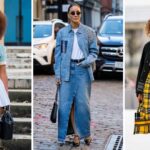Have you ever looked in your closet and felt like nothing quite fits right, or that certain clothes just don’t flatter you, no matter how trendy they are? The secret to dressing well isn’t just about following the latest fashion trends; it’s about understanding your unique body shape and choosing clothes that enhance your natural proportions. When you dress for your body type, you instantly look more polished, confident, and stylish.
This guide will help you identify your body shape and provide simple, easy-to-follow tips on how to choose clothes that make you look and feel your absolute best.
Why Understanding Your Body Type Matters
Think of your body as a canvas. Just as a painter uses different techniques to highlight parts of their art, you can use clothing to create visual balance, emphasize your best features, and minimize areas you’re less confident about. When your clothes fit your body shape, they drape better, they are more comfortable, and they simply make you look more put-together. It’s not about changing your body; it’s about celebrating it and making smart clothing choices.
General Principles for All Body Types
Before we dive into specific shapes, remember these universal rules:
- Fit is King: This is the most crucial rule. Clothes that are too tight or too baggy will never look good, regardless of your body type. Always choose clothes that skim your body, allowing movement without being restrictive.
- Proportion and Balance: The goal is often to create or enhance the illusion of an hourglass shape, where the shoulders and hips are balanced, and the waist is defined.
- Confidence is Your Best Accessory: No matter what you wear, if you wear it with confidence, you will look amazing.
Identifying Your Body Type
To figure out your body shape, stand in front of a mirror (ideally in your underwear or fitted clothing) and take a good look at your shoulders, bust, waist, and hips.
- Hourglass:
- Characteristics: Your bust and hip measurements are roughly equal, and you have a clearly defined, narrower waist. You have a curvy figure.
- Goal: Celebrate your natural curves and defined waist.
- Pear (or Triangle):
- Characteristics: Your hips are wider than your bust and shoulders. Your waist is usually well-defined. Your weight tends to settle in your hips, thighs, and bottom.
- Goal: Balance your wider lower body with your narrower upper body, or draw attention upwards.
- Apple (or Round):
- Characteristics: You tend to carry weight around your midsection (bust, stomach). Your shoulders and hips might be narrower, and your waist isn’t as defined. You may have slender arms and legs.
- Goal: Create a more defined waistline, draw attention to your bust and legs, and elongate your torso.
- Rectangle (or Straight/Athletic):
- Characteristics: Your bust, waist, and hip measurements are fairly similar. You have a relatively straight silhouette with less natural waist definition. You may have an athletic build.
- Goal: Create curves and add definition to your waist.
- Inverted Triangle:
- Characteristics: Your shoulders and/or bust are wider than your hips. You may have a less defined waist and slender legs.
- Goal: Balance your wider upper body with your narrower lower body, or draw attention downwards.
Dressing Strategies for Each Body Type
Once you know your shape, here’s how to choose clothes that flatter you best:
1. Hourglass (Celebrate Your Curves)
- Tops: V-necks, scoop necks, and sweetheart necklines. Fitted tops that highlight your waist. Wrap tops and blouses.
- Bottoms: High-waisted jeans, pencil skirts, A-line skirts. Bootcut or flare jeans balance your hips.
- Dresses: Wrap dresses, body-con dresses, A-line dresses that cinch at the waist.
- Outerwear: Belted coats (like trench coats), fitted blazers that nip in at the waist.
- Fabrics & Patterns: Medium-weight fabrics that drape well. Avoid overly boxy or shapeless garments.
2. Pear (Balance Your Proportions)
- Tops:
- Necklines: Wider necklines like boat necks, off-the-shoulder, cowl necks to broaden your shoulders.
- Details: Embellishments, ruffles, bright colors, or patterns on your upper body to draw attention upwards.
- Sleeves: Puffed sleeves, bell sleeves, or structured shoulders.
- Fit: Fitted tops that highlight your defined waist.
- Bottoms:
- Color: Darker, solid colors for skirts and trousers.
- Style: A-line skirts, bootcut jeans, wide-leg trousers. Avoid very skinny jeans or pants that cling tightly to your thighs.
- Waist: High-waisted styles to emphasize your small waist.
- Dresses: A-line dresses, empire waist dresses, wrap dresses that highlight your waist and skim over your hips.
- Outerwear: Structured jackets that end at the waist or just below the widest part of your hips. Jackets with shoulder pads.
- Fabrics & Patterns: For bottoms, opt for smooth, matte fabrics. For tops, you can be more playful with textures and patterns.
3. Apple (Define Your Waist & Elongate)
- Tops:
- Necklines: V-necks, scoop necks, and deep U-necks to elongate your torso and draw attention to your décolletage.
- Fit: Flowy tops that skim over your midsection without adding bulk. Empire waist tops or tunics.
- Avoid: Tight-fitting tops around the stomach, horizontal stripes over the midsection.
- Bottoms:
- Style: Straight-leg jeans, bootcut jeans, wide-leg trousers.
- Waist: Mid-rise or high-rise with a wide waistband for comfort and to avoid digging in.
- Focus: Showcase your slender legs.
- Dresses: A-line dresses, empire waist dresses, wrap dresses (if the wrap is above the natural waist). Shift dresses that fall straight.
- Outerwear: Open cardigans, long blazers, duster coats that create vertical lines. Avoid belted coats that cinch tightly at your natural waist.
- Fabrics & Patterns: Soft, flowing fabrics. Vertical stripes or small, all-over prints can be flattering.
4. Rectangle (Create Curves)
- Tops:
- Necklines: Scoop necks, boat necks, ruffles, and embellishments around the bust to add volume.
- Details: Peplum tops, tops with ruffles or detailing at the bust and hips to create curves.
- Belting: Cinch your waist with a stylish belt, especially over dresses or blazers.
- Bottoms:
- Style: Flared jeans, wide-leg trousers, A-line skirts, pleated skirts.
- Details: Pockets, ruffles, or embellishments around the hips to add volume.
- Avoid: Very straight, boxy pants.
- Dresses: A-line dresses, empire waist dresses, wrap dresses (with cinching), dresses with ruching or detailing at the waist.
- Outerwear: Belted coats, blazers that nip in at the waist. Jackets with detailing on the shoulders.
- Fabrics & Patterns: Can experiment with textures and patterns that add volume.
5. Inverted Triangle (Balance Your Shoulders)
- Tops:
- Necklines: V-necks, halter necks, and scoop necks to narrow the shoulder line.
- Sleeves: Raglan sleeves, simple, clean sleeve lines. Avoid puff sleeves, shoulder pads, or overly dramatic shoulder details.
- Color: Darker, solid colors on top; lighter colors or patterns on the bottom.
- Bottoms:
- Style: Wide-leg trousers, flared jeans, A-line skirts, pleated skirts, or skirts with ruffles or embellishments to add volume to your hips.
- Patterns: Bold patterns, bright colors, or horizontal stripes on your lower body to draw attention downwards.
- Dresses: A-line dresses, full skirts, or dresses with detailing/volume around the hips.
- Outerwear: Simple, clean-lined jackets. Avoid jackets with prominent shoulder details. Long cardigans that skim over your shoulders.
- Fabrics & Patterns: Smooth fabrics on top. Textured or patterned fabrics on the bottom.
The Role of Accessories
Accessories can be incredibly helpful in balancing proportions:
- Belts: A belt can create or emphasize a waistline on any body type.
- Necklaces: Long necklaces can elongate the torso (good for apple shapes). Statement necklaces can draw attention to the upper body (good for pear shapes).
- Bags: Consider the size and placement. A shoulder bag that hits at your hip can add volume to a rectangle or inverted triangle shape. A crossbody bag can create a diagonal line that flatters.
- Shoes: Heels can elongate legs (good for apple shapes). Boots can add visual weight to the lower body (good for inverted triangles).
Beyond Body Type: Personal Style and Confidence
While understanding your body type is a fantastic tool, it’s just a guide, not a rulebook. Ultimately, true style comes from:
- Personal Preference: Wear what you love and what makes you feel good.
- Comfort: If you’re not comfortable, you won’t look confident.
- Experimentation: Try new things! You might discover a style that works for you that isn’t typically recommended for your body type.
- Confidence: This is the most important outfit you’ll ever wear. When you feel good, you look good.
Conclusion: Dress to Empower Yourself
Learning to dress for your body type is about empowering yourself. It’s about knowing how to make clothes work for you, rather than feeling like you have to fit into rigid fashion molds. By understanding your unique proportions and applying these simple strategies, you can build a wardrobe that not only looks fantastic but also makes you feel confident, comfortable, and ready to take on the world. So, embrace your shape, experiment with these tips, and discover the joy of truly dressing for success, every single day.


